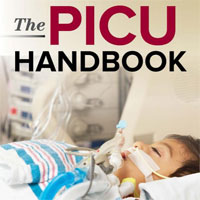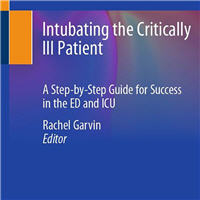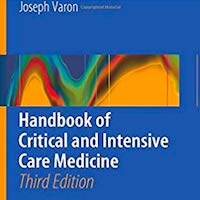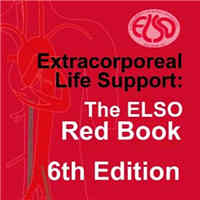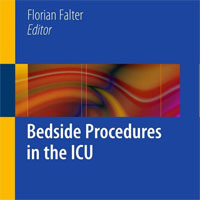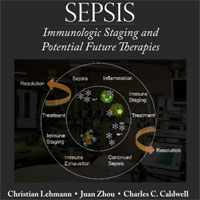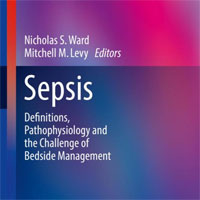Tag: SOFA
Characteristics, Management, and In-hospital Mortality Among Patients with Severe Sepsis in ICU in Japan
Sepsis is a leading cause of death and long-term disability in developed countries. A comprehensive report on the incidence, clinical characteristics, and evolving management of sepsis is important. Thus, this study aimed... read more
A Positive Fluid Balance is an Independent Prognostic Factor in Patients with Sepsis
Intravenous fluid administration is an essential component of sepsis management, but a positive fluid balance has been associated with worse prognosis. We analyzed whether a positive fluid balance and its persistence over... read more
AKI and Subsequent Frailty Status in Survivors of Critical Illness
Acute kidney injury in survivors of critical illness predicted worse frailty status 3 and 12 months postdischarge. These findings have important implications on clinical decision making among acute kidney injury survivors... read more
Effect of High-dose Ascorbic Acid on Vasopressor’s Requirement in Septic Shock
In this study, administration of high-dose ascorbic acid significantly decreased the requirement for vasopressor's dose and duration in surgical critically ill patients with septic shock. Several mechanisms including anti-oxidant,... read more
Prognostic Accuracy of the Serum Lactate Level, the SOFA Score and the qSOFA Score for Mortality Among Adults with Sepsis
Sepsis is a common critical condition caused by the body’s overwhelming response to certain infective agents. Many biomarkers, including the serum lactate level, have been used for sepsis diagnosis and guiding treatment.... read more
Loss of Sphingosine 1-Phosphate in Septic Shock is Predominantly Caused by Decreased Levels of HDL
Sphingosine 1-phosphate (S1P) is a signaling lipid essential in regulating processes involved in sepsis pathophysiology, including endothelial permeability and vascular tone. Serum S1P is progressively reduced in sepsis patients... read more
Ascorbic Acid, Corticosteroids, and Thiamine in Sepsis
The combination of thiamine, ascorbic acid, and corticosteroids is a promising new therapy for sepsis resuscitation but currently lacks robust evidence to support its widespread use. The potential effectiveness of this medication... read more
Characteristics, risk factors and outcomes of Clostridium difficile infections in Greek ICU
Clostridium difficile is one of the major causes of diarrhea among critically ill patients and its prevalence increases exponentially in relation to the use of antibiotics and medical devices. We sought to investigate the... read more
Updates and Controversies in the Early Management of Sepsis and Septic Shock
For patients in the ED who are suspected of having sepsis, swift, effective management is vital to improving outcomes. This issue reviews the latest evidence on the diagnosis and treatment of sepsis and septic shock: ... read more
DeepSOFA: A Continuous Acuity Score for Critically Ill Patients using Clinically Interpretable Deep Learning
Traditional methods for assessing illness severity and predicting in-hospital mortality among critically ill patients require time-consuming, error-prone calculations using static variable thresholds. These methods do not... read more
Assessment of the Safety of Discharging Select Patients Directly Home From the ICU
The discharge of select adult patients directly home from the ICU is common, and it is not associated with increased health care utilization or increased mortality. Among the 6732 patients included in the study, 2826 (42%)... read more
Artificial Intelligence in the ICU
ICU doctors are often required to analyse large volumes of complex, heterogeneous data to make life-critical decisions. Artificial Intelligence (AI), if used effectively, could reduce this burden by transforming data into... read more
Terlipressin vs. Norepinephrine As Infusion in Patients With Septic Shock
In this multicentre, randomised, double‑blinded trial, we observed no difference in mortality between terlipressin and NE infusion in patients with septic shock. Patients in the terlipressin group had a higher number of... read more
pH-guided Fluid Resuscitation and BICAR-ICU
The use of bicarbonate is a source of eternal disagreement. Bicarbonate has a shameful history of being abused in situations where it's unhelpful (e.g. cardiac arrest). This has impugned its reputation, giving it an aura... read more
Lies, Damned Lies, and Sepsis Bundles
The Surviving Sepsis Campaign recently released an update to the bundles of care it recommends for "sepsis" patients. You may have heard of the three-hour bundle, which essentially means that you do a bunch of stuff (lactate,... read more
Timing of Renal Support and Outcome of Septic Shock and ARDS
Early RRT initiation strategy was not associated with any improvement of 60-day mortality in patients with severe acute kidney injury and septic shock or Acute Respiratory Distress Syndrome (ARDS). Unnecessary and potentially... read more
Association of the Quick Sequential (Sepsis-Related) Organ Failure Assessment (qSOFA) Score With Excess Hospital Mortality in Adults With Suspected Infection in Low- and Middle-Income Countries
In this retrospective secondary analysis of 9 diverse LMIC cohorts that included 6569 hospitalized adults with suspected infection, a qSOFA score greater than or equal to 2 was significantly associated with increased likelihood... read more
Muscle Weakness and 5-Year Survival in ARDS Survivors
At hospital discharge, >1/3 of Acute Respiratory Distress Syndrome (ARDS) survivors had muscle weakness. Greater strength at discharge and throughout follow-up was associated with improved 5-year survival. In patients with... read more
Assessment of Clinical Criteria for Sepsis
The Third International Consensus Definitions Task Force defined sepsis as "life-threatening organ dysfunction due to a dysregulated host response to infection." The performance of clinical criteria for this sepsis definition... read more
Diagnosis of Sepsis from a Drop of Blood by Measurement of Spontaneous Neutrophil Motility in a Microfluidic Assay
Current methods for the diagnosis of sepsis have insufficient precision, causing regular misdiagnoses. Microbiological tests can help to diagnose sepsis, but are usually too slow to have an impact on timely clinical decision-making.... read more
Data Analysis Shows ICU Scores Accurate in Predicting Risk of Death
Using clinical data from more than 200 hospital intensive care units, Philips Healthcare has shown that three ICU risk scores—designed for different purposes—performed well as a marker of severity of illness at admission... read more
Comparison of European ICU patients in 2012 (ICON) versus 2002 (SOAP)
Over the 10‑year period between 2002 and 2012, the proportion of patients with sepsis admitted to European ICUs remained relatively stable, but the severity of disease increased. In multilevel analysis, the odds of ICU... read more


